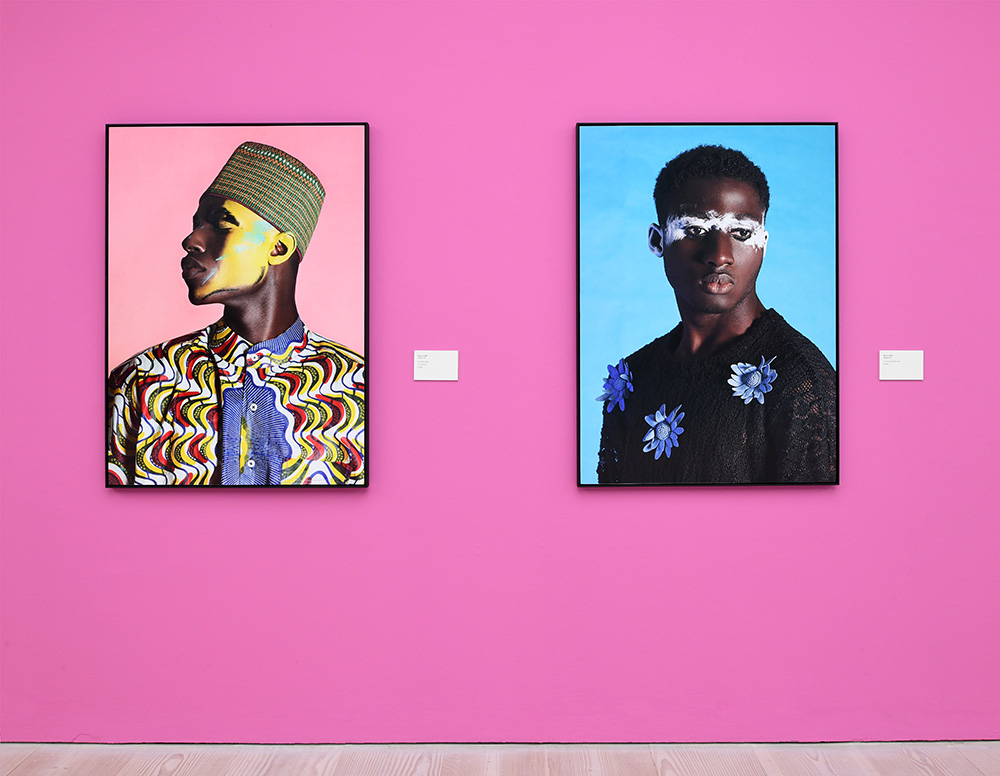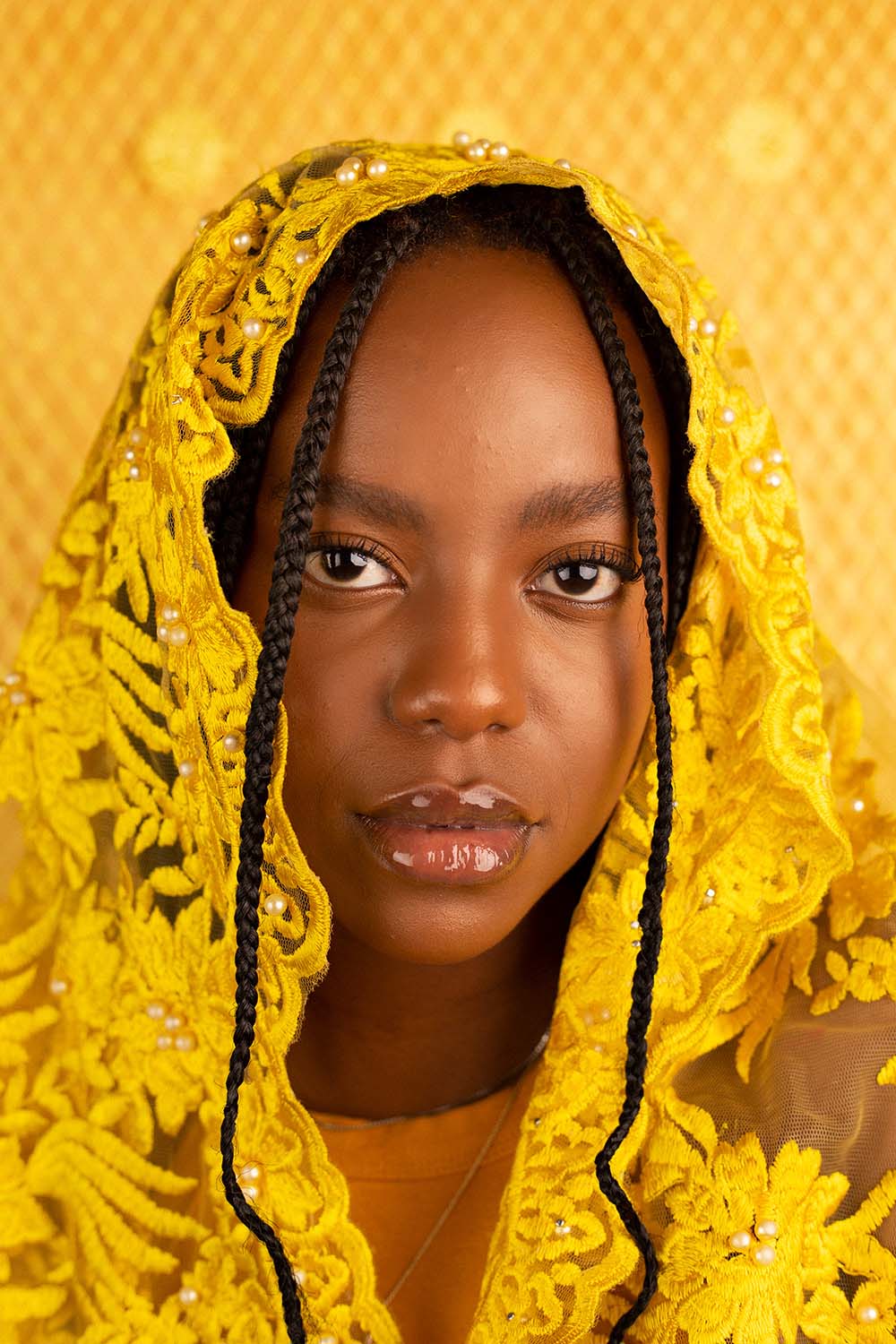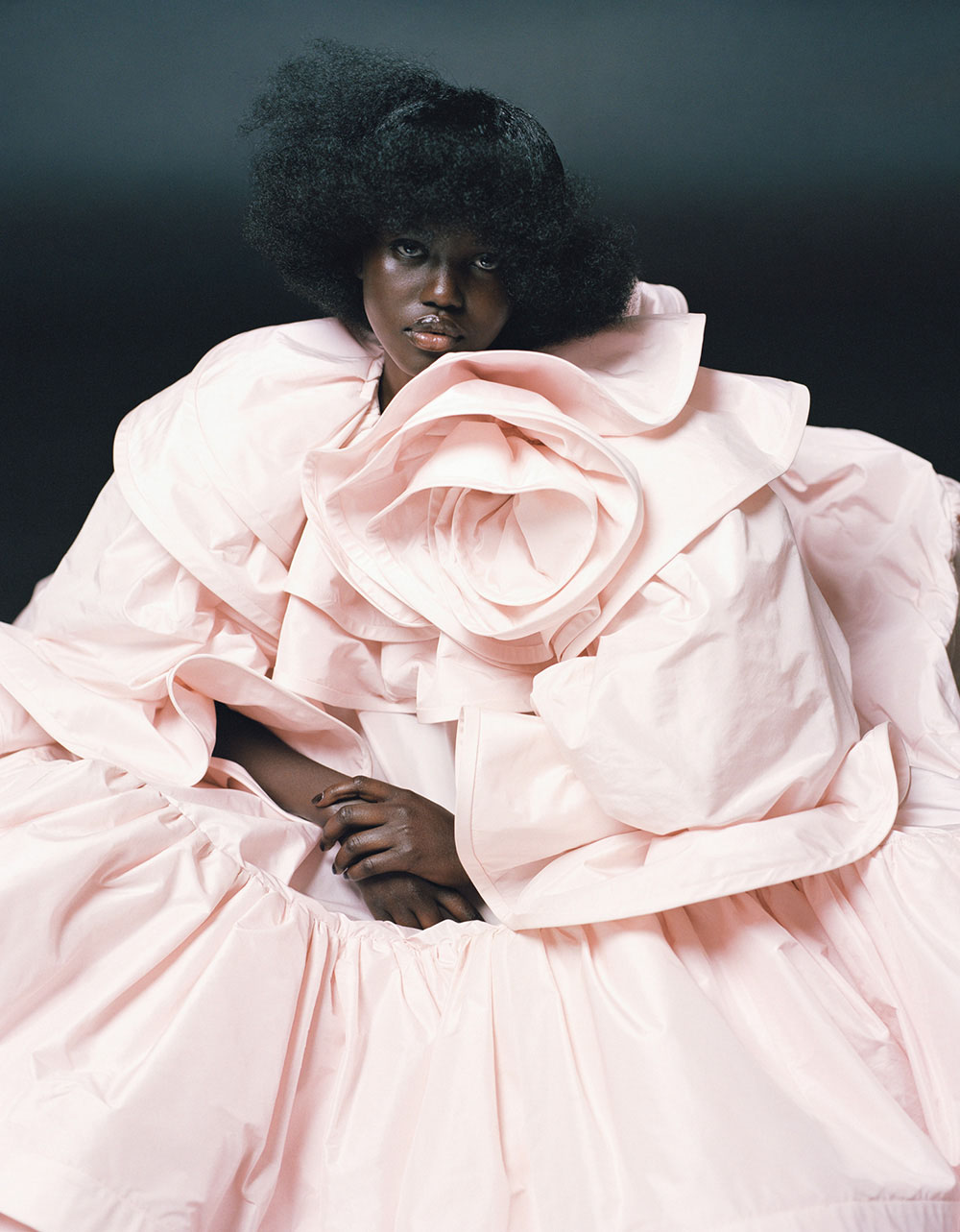Dominique Nok talks with Antwaun Sargent, the writer and curator of the book and exhibition The New Black Vanguard: Photography between Art and Fashion, a fusion of contemporary art and fashion photography by cutting-edge international Black imagemakers on display in Saatchi Gallery.
In the heart of Chelsea on the first floor of Saatchi Gallery, the New York-based writer and art-critic Antwaun Sargent has carefully curated an exciting exhibition showcasing the works of a generation of skilled and talented Black imagemakers.
He stylishly and unapologetically introduces 15 growing talents such as Quil Lemons, Tyler Mitchell, Arielle Bobb-Willis, Campbell Addy, Micaiah Carter, and Nadine Ijewere alongside added contributions of Black British photographers in a non-conventional way.
Instead of displaying the photographs in a traditional white cube he stimulates the visitors’ visual senses with an explosion of bold and lush coloured gallery walls complementing the equally vibrant portraits and conceptual images.

Saatchi Gallery presents The New Black Vanguard (28 Oct – 22 Jan) supported by Burberry and organised by Aperture. © Saatchi Gallery
In this thrilling exhibition the young Black contemporary photographers offer a different, inspiring, and fresh gaze presenting and framing the Black body as a universal signifier for beauty and identity through fashion and culture. We asked them about their thoughts about the exhibition, and for industry tips. Joining the conversation are Campbell Addy and Mahaneela, two British artists and exhibitors in the show.
AP: Why do you believe this exhibition is significant?
Antwaun Sargent: I really think this project is about acknowledging the fact that there are Black imagemakers working from Lagos to London to New York to California to South Africa who created a community through their photographs. In those images they re-evaluate their own Blackness and the community that surrounded and created and constructed their notions of their identity, their notions of beauty and their notions of the camera. If you think about the role that photography played in the creation of Black identity at the turn of the century you will recognise that the camera allowed us the first opportunity to control our images. There is a deep history of Black portraiture and of Black imagemakers using the camera. This exhibition re-evaluates what it means to be in the world right now and how to capture that, for themselves but also for the rest of us.
AP: Who are your photography sitters?
Mahaneela: I am half Indian, half African and I have a stepdad from Jamaica. I have always photographed people who look like me, the faces I know, the people from my community. Usually these are my peers who are musicians or creatives from the African and Asian diaspora. If it isn’t someone who is from my peer group it is usually someone I met on my travels. I travel a lot and spend a lot of time in places where I am from. Because I am the product of colonialism on both the Indian and the West African side, my history is rooted in hardship and trauma. Therefore, I feel the need to keep returning to those places and to re-connect while actively and intentionally maintaining the cultural link. This can be more challenging when someone lives away from home as it becomes once removed then twice removed.
AP: What would you like to achieve with your images?
Mahaneela: I feel very strongly about being authentic in the imagery I create. The power of photography is to create an image and show the world your perspective. Almost in direct opposition with my Black and Brown history, I have the desire to showcase my community expressing joy and happiness. Literally instilling joy in people. My exhibited image is part of my photo series ‘In Ochre’ where I photographed Black and Brown people in South Africa. The series is all about the ochre spectrum with the yellow, orange, and brown tones feeling very warm and familiar in both my Indian and African culture. When I see people engage with the exhibited image, especially people from my communities, it gives them a sense of pride and joy because she looks very regal.
AP: How can visitors engage with the images?
Antwaun Sargent: Imagemakers create their images for a reason. I invite visitors when they engage with an image to think about the construction of it. For example, when you see a photograph of Tyler Mitchell or Nadine Ijewere, what you see is these artists authoring a photograph. It might be interesting to spend time with these images and to think about how and why they want that image to exist in the world.
AP: When selecting imagemakers and their artworks what do you look for?
Antwaun Sargent: As a curator and writer I like to follow the art. If the featured artists were not making these images and self-publishing them, there would not be a book. These imagemakers created this movement themselves. If the new Black Vanguard is teaching us anything it is that the imagemaker and their work should have a distinct voice and a distinct aesthetic. That the work is created from their specific point of view and represents what they want to see in the world. I personally am drawn to artists that are original in their intent and in the way they think about making art. Therefore, I would suggest to just follow your own voice and then everything else will work out. Also try to stay away from this idea that for art to be valuable is for someone to notice your art. I do think it is really important to let it be about the making first and to be driven to make the images you like.
AP: When did you photograph the exhibited artworks?
Campbell Addy: These images were created six years ago; I was such a baby in terms of technical skills. It is really a reminder that ideas are all unique. When I create work, I research it, draw it, and photograph it. I create something in a very specific way. It is just my idea. It is a completely different experience when it transforms into a certain format.
AP: You took the images when you were 23 years old. Would you say the image is still up to your standard?
Campbell Addy: To me, I am an emotional being. I will ask myself the question: is the image still conveying the idea it is supposed to? Does it still pull my heart strings? Does it still answer or propose questions I was dealing with at the time? The moment an image stops doing that, that will probably be the moment I will stop showing them. But it is also a reminder for me that it was at a time I had zero money, I was living in a hole in the wall, and I was the happiest because I was just creating. There was no goal when I made those images. It was a case of letting them out, or otherwise I might die. Fast forward six years, it is in the Saatchi Gallery!

Untitled (Hijab Couture), New York, 2019, from The New Black Vanguard (Aperture, 2019). © Tyler Mitchell
AP: Is there a difference seeing your work exhibited, compared to it being published?
Campbell Addy: Yes, the format and the medium are very different. When you see your image in an exhibition you can see it in its entirety. The way it is curated, the smell, the sound and the light can change how my work is experienced. Usually, it is installed on a wall where it can breathe, and you can almost block out the world and focus on the image only. You can sit with it and dissect it in ways where you can’t and don’t if it is printed in a magazine, as there is often a time limit because there is always something after. I never get to see what people think, what the nuances are or what they like. At this point in my career, I love exhibiting. I have done quite a few solo shows now here in London and in Paris and more group shows both in fashion and art.
AP: What kind of camera equipment do you use to create these stunning images?
Mahaneela: It really varies, every day is a different and it totally depends on what images I am about to create. My ‘baby’ that took the ‘In Ochre’ picture in the exhibition was a Canon EOS 60D, a pretty entry-level camera and not very complicated. I have and do work a lot on medium format. I have a Pentax medium format which is my new camera and very fun to use. I also use a lot of my grandfather’s cameras. It feels incredible to hold and use them knowing he did the same in the 1950s in Africa. My favourite one to use is his Olympus OM10 and I also use his Nikon FM2 a lot, and then a bunch of point-and-shoot cameras. They still work perfectly well and are so timeless. You don’t need any batteries as they are mechanical, solid, and reliable pieces of equipment.
Campbell Addy: It depends, I am very much an artist that is about the means of the idea than the need to have a certain camera. When I first started shooting, I used an Olympus E-M10 alongside a Mamiya RZ67. Even though I rarely use my M10 I still have all my cameras. For digital, it was a Canon, now it is a Nikon D850 and a D70. Now I predominantly use my cameras as a tool and I don’t let them use me as a tool. I don’t want my work to be defined by a simple thing as I believe it should be about the ideas of what you create.
AP: Any tips for lighting?
Campbell Addy: I grew up in England where there is not a lot of natural light! I learned more about lighting by looking at films such as Pixote, an old Brazilian film. They used phenomenal light settings. For everyone starting out: you don’t need to have the most expensive lighting. It is science, you just need a light source. I now often use a mixture of continuous light, ambient and tungsten. My choice depends on the goal.
Mahaneela: I would say when working with a reflector, never use the silver side for the darker skin complexions. That is not made for us – gold only, I would say. Just leading into the warmth of your subjects and their skin tones is important. Also making the right decisions if there are more people involved making the image with you, such as set design, makeup and hair stylists. Let everyone play their part and pay attention to the small details.

Moments of Youth, Lagos, Nigeria, 2019, from The New Black Vanguard (Aperture, 2019). © Daniel Obasi
The exhibition ‘The New Black Vanguard: Photography between Art and Fashion’, organised by Aperture, will be on view at Saatchi Gallery until 22 January 2023. Tickets are available at https://tickets.saatchigallery.com/
Top tips:
Campbell Addy:
- Do you, as there is no one else like you.
- To find your distinct artistic voice in this world filled with distractions, temporarily close yourself off from the world and freeze all social media.
- Be honest to yourself.
- Focus on what you want to see.
- Spend time with your idea(s) by yourself.
Antwaun Sargent:
- Learn from other photographers.
- Build your own platforms.
- Make your own magazine or zine.
- Invest in your social media accounts.
- Exhibit your work.
- Build your own community.
- Don’t take no for an answer.
Mahaneela:
- Not everything is as it appears (online and offline).
- If you have a stable day job, don’t quit it.
- You are very capable of being an and person: I am this AND that.
- It is okay to earn money from another income source that is not your creative practice.
- Don’t conflate skill and talent with being financially compensated or think because you can’t do this full time you are not good enough.
- It is okay to only go full time if you get paid what you deserve.
Antwaun Sargent is an internationally recognised writer, editor, and curator living in New York City. His writing has appeared in The New York Times, New Yorker, and various art and museum publications. Sargent is author of The New Black Vanguard: Photography between Art and Fashion (Aperture, 2019) and editor of Young, Gifted and Black: A New Generation of Artists (2020). He is also a director at Gagosian Gallery.
Campbell Addy is a London-based photographer and filmmaker born and raised in South London. His work follows unique narratives and authentic emotions in nature, with a focus on distinctive casting and under-represented faces. He studied at Central Saint Martin’s College of Art and design and launched a biannual magazine, Niijournal, and also runs Nii Agency, a modelling and casting bureau.
Mahaneela is a multi-faceted artist, who at a young age explored her love for photography and filmmaking. Coming from a long lineage of visual and musical artists on both sides of her family, her work takes inspiration from her multicultural background and the storytelling of diasporic history across South Asia, the Caribbean and Africa.
Further reading:
Nadine Ijewere: breaking down diversity barriers
UKBFTOG take over Notting Hill Carnival!









